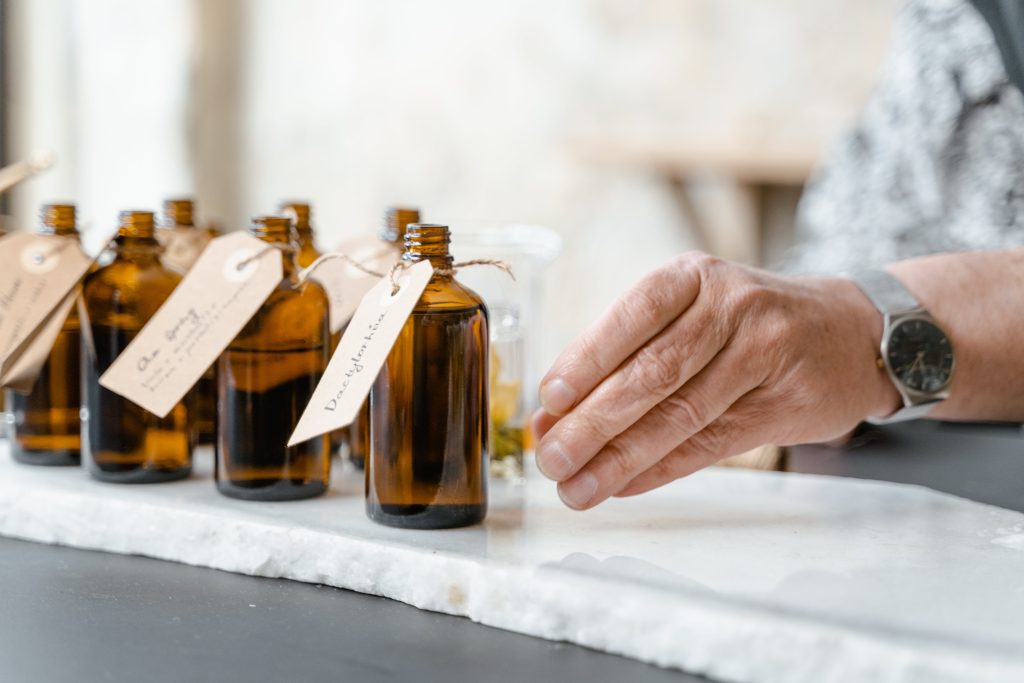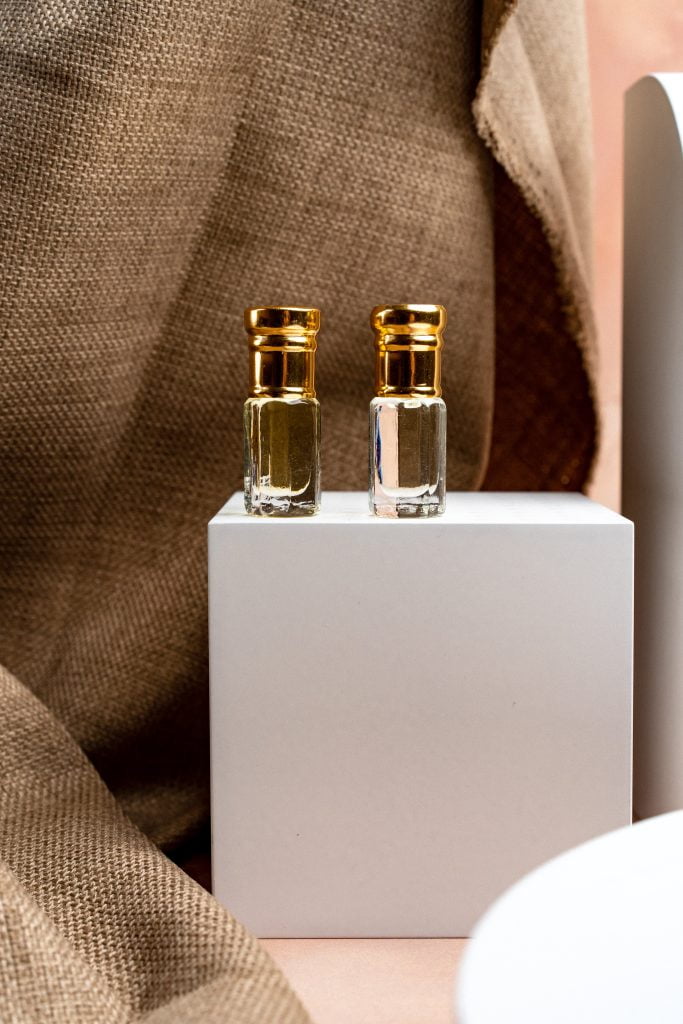Perfume-making is an age-old artistry that captivates the senses. The process of crafting a fragrance is like a delicate dance of notes and accords that results in a symphony that transcends time.
DIY perfume allows enthusiasts to create personal fragrances at home using essential oils and understanding the structure of perfume notes—top, middle, and base notes—which contribute to the overall fragrance profile.
Introduction to Perfume-making
Perfume-making is an art that involves blending essential oils, carrier oils, and other ingredients to create a unique and alluring fragrance. With the rise of DIY culture and the desire for natural products, perfume-making has become a popular hobby and a way to create personalized scents. At its core, perfume-making is about understanding the different types of ingredients and how they interact to form a harmonious blend.
Essential oils are the heart of any perfume, providing the primary scents that define the fragrance. These oils are derived from various plants and flowers, each offering a distinct aroma. Carrier oils, such as fractionated coconut oil, almond oil, and jojoba oil, are used to dilute the essential oils and ensure a smooth application. Other ingredients, like distilled water and grain alcohol, can also be used to adjust the consistency and longevity of the perfume.
Understanding the structure of a perfume is crucial. A well-crafted fragrance is composed of top notes, middle notes, and base notes. Top notes are the initial scents that greet you, while middle notes form the core of the fragrance, and base notes provide depth and lasting power. Blending these notes skillfully is what makes perfume-making a true art form.
The essence of perfume crafting

At the heart of perfume-making lies the quest to capture and encapsulate the essence of plants in a bottle. Skilled perfumers, like composers, mix and harmonise various aromatic elements to create a unique and captivating olfactory masterpiece.
Understanding fragrance notes is fundamental to the craft of perfume-making. Professionals categorise them into top, middle, and base notes. The top notes, characterised by their immediate impact, offer an introduction to the scent. Middle notes, often floral or spicy, come from the heart of the fragrance, providing a bridge between the initial impression and more long-lasting base notes. Base notes, with their deep and long-lasting aromas, anchor the perfume, leaving a memorable trail.
Making one’s own perfume allows for complete control over scent strength and ingredients, ensuring a personalized and natural alternative to store-bought options.
Raw Materials Sourcing and Extraction of Different Essential Oils
One of the most important things in crafting high-quality fragrance is a careful selection of raw materials. Perfumers source a variety of natural ingredients, such as flowers, spices, woods, and fruits, each chosen for its unique olfactory profile. The quality of the materials is extremely important because it influences the final character and longevity of the fragrance. Essential oils and other ingredients can be combined in a spray bottle for personal fragrance applications, ensuring the mixture is well-shaken before use.
When it comes to extraction, there are a variety of techniques. Steam distillation, often used for delicate floral notes, gently captures the essence of petals. Solvent extraction involves dissolving aromatic compounds, yielding rich absolutes. Enfleurage, a traditional method, employs fats to absorb fragrance from delicate blooms.
Understanding Lavender Essential Oil
Lavender essential oil is a popular choice in perfumery due to its unique herbaceous floral aroma and numerous benefits. Derived from the Latin word “lavare,” meaning “to wash,” lavender essential oil has been cherished for thousands of years for its fragrant and cleansing properties. This versatile scent blends well with many other essential oils, making it a great addition to any perfume blend.
Lavender essential oil is known for its sweet, slightly woody aroma that strikes a perfect balance between floral and herbal notes. This makes it an ideal middle note in many perfume compositions, providing a bridge between the lighter top notes and the deeper base notes. Its calming and soothing properties also add an element of tranquility to any fragrance, making it a favorite among perfumers and enthusiasts alike.
In perfume-making, lavender essential oil can be combined with a variety of other scents to create a harmonious blend. Whether paired with citrus for a refreshing top note or with woods and resins for a grounding base, lavender’s adaptability ensures it enhances any fragrance composition.
Perfume-making and Lavender Essential Oil

Lavender oil, with its light and airy floral scent, plays a role as a perfumer’s muse. Its versatility shines as it blends effortlessly with almost any other fragrance without overpowering. In floral compositions, lavender contributes a fresh and airy quality, while in more deep oriental and woody blends, it adds a touch of warmth and sophistication. This adaptability has solidified lavender’s status as a perfumer’s cherished companion.
Lavender perfume can be crafted by blending lavender essential oil with other essential oils to create unique, personalized fragrances. This allows for an all-natural alternative to commercial perfumes, suitable for anyone looking to explore DIY projects and formulations.
Working with Carrier Oils
Carrier oils are an essential component of perfume-making, as they help to dilute essential oils and create a smooth, consistent fragrance. Common carrier oils used in perfume-making include fractionated coconut oil, almond oil, and jojoba oil. Each carrier oil has its own unique properties and benefits, and choosing the right one can make a significant difference in the final product.
Fractionated coconut oil is a popular choice due to its light texture and long shelf life. It absorbs quickly into the skin without leaving a greasy residue, making it ideal for perfumes. Almond oil, on the other hand, is rich and nourishing, providing a slightly heavier base that can enhance the longevity of the fragrance. Jojoba oil closely resembles the skin’s natural oils, making it an excellent carrier that helps to balance and stabilize the perfume blend.
When selecting a carrier oil, consider the desired texture and longevity of your perfume. A lighter carrier oil like fractionated coconut oil is perfect for a fresh, airy scent, while a richer oil like almond oil can add depth and staying power. Experimenting with different carrier oils allows you to tailor your perfume to your personal preferences and needs.
Perfume Structure and Blending
Perfume structure refers to the way in which essential oils are blended to create a fragrance. A typical perfume structure consists of top notes, middle notes, and base notes. Top notes are the light, fresh notes that give the blend its first impression and usually evaporate more quickly. Middle notes tend to become more apparent after the top notes fade and give the signature identity to the perfume. Base notes are the heavier, muskier, and lingering notes that give depth to the fragrance.
Top notes are often composed of citrus, herbal, or light floral scents that provide an immediate impact. These notes are the first to be noticed but also the first to dissipate. Middle notes, also known as heart notes, emerge as the top notes fade, offering a more rounded and full-bodied scent. Common middle notes include lavender, rose, and spices, which form the core of the fragrance. Base notes are the foundation of the perfume, providing depth and longevity. These notes, such as sandalwood, vanilla, and musk, linger on the skin long after the top and middle notes have evaporated.
Blending these notes requires a delicate balance. Start by selecting a few essential oils for each note category and experiment with different combinations. The goal is to create a harmonious blend where each note complements the others, resulting in a well-rounded and captivating fragrance.
Perfume-making Techniques
Perfume-making involves a range of techniques, from blending essential oils to creating a fragrance that lasts. One of the key aspects of perfume-making is creating a signature scent that reflects your personal style. This involves experimenting with different essential oils and finding the perfect balance of top, middle, and base notes.
To create a homemade perfume, start by selecting your essential oils and carrier oil. Mix a few drops of each essential oil with the carrier oil, adjusting the proportions until you achieve the desired scent. For a more complex fragrance, consider adding a few drops of vanilla extract or other natural ingredients to enhance the blend.
Understanding the shelf life of your perfume is also important. Essential oils can degrade over time, so it’s essential to store your perfume in a cool, dark place to maintain its potency. Using grain alcohol as a preservative can also help extend the shelf life of your homemade perfume.
Creating a natural and effective perfume requires patience and experimentation. By understanding the properties of different essential oils and carrier oils, and mastering the art of blending, you can craft a fragrance that is uniquely yours and stands the test of time.
The Quintessential Lavender Note
Lavender oil, with its sweet, herbaceous, and slightly woody aroma, is often heralded as the quintessential lavender note in perfumery. Its aromatic profile strikes a delicate balance between floral and herbal, making it a sought-after ingredient for both feminine and masculine fragrances.
Harmony in Fragrance accords
Lavender plays a pivotal role in creating accords—harmonious blends of multiple notes that define the character of a fragrance. Whether combined with citrus for a refreshing top note, entwined with florals for a heart accord, or anchored in base notes alongside woods and resins, lavender lends its unique nuance to diverse ones.

The calming effect
Beyond its aromatic allure, the lavender plant is known for its calming and soothing ability, which is celebrated around the world. Perfumers harness this characteristic to infuse fragrances with a serene and tranquil ambiance. Lavender-laden perfumes often evoke a sense of relaxation, making them popular choices for those seeking not only an enchanting smell but also serenity.
Less is more in Homemade Perfume.
Another important thing when using lavender in perfume creation is that less is indeed more. A mere couple of drops of pure lavender oil is enough to achieve the desired aromatic effect with exquisite finesse. Its potency allows for precise control, empowering perfumers and enthusiasts to create fragrances that are both captivating and delicately nuanced.

Timeless Elegance
Lavender has graced the formulation of some of the most iconic perfumes, embodying timeless elegance. Its sweet, delicate presence can be traced in both classic and contemporary perfume creations, showcasing its enduring appeal across generations. Lavender-based fragrances effortlessly navigate the realms of sophistication and approachability.
Lavender and modern perfume trends
As the landscape of perfumery evolves, lavender continues to make a bold statement in modern fragrance trends. Artisanal and niche perfumers explore innovative ways to showcase this magical plant, experimenting with complementary notes that elevate its aromatic profile and redefine lavender’s traditional associations.

Conclusion
In the symphony of perfumery, lavender oil emerges as a virtuoso note, playing a melody that resonates through the ages. Its ability to harmonise with a spectrum of notes and evoke a spectrum of emotions solidifies lavender’s enduring relevance in the world of fragrance.
